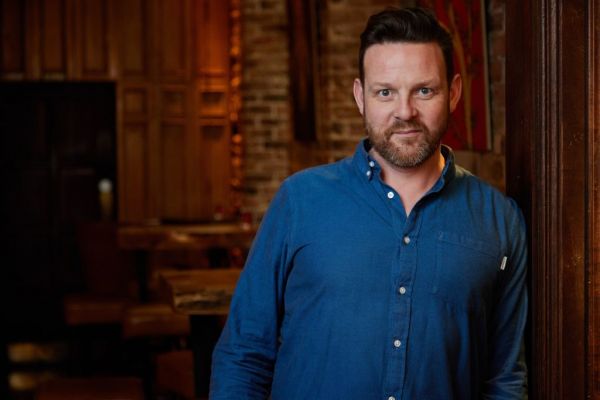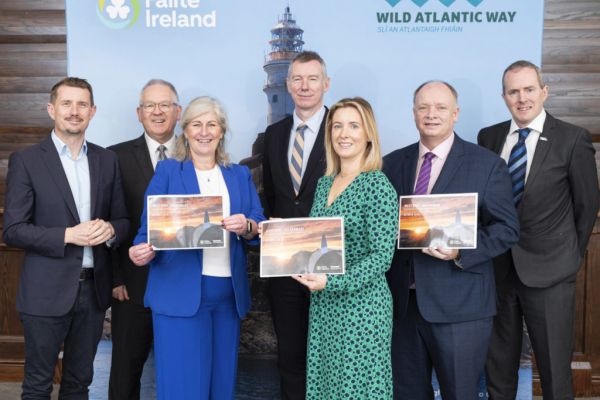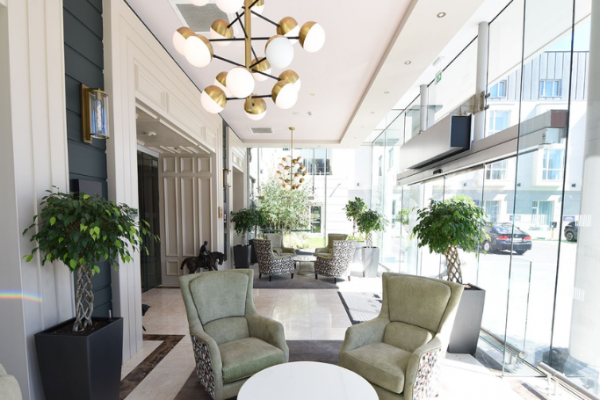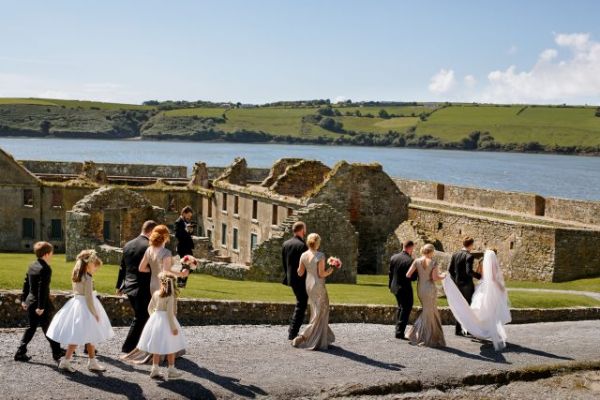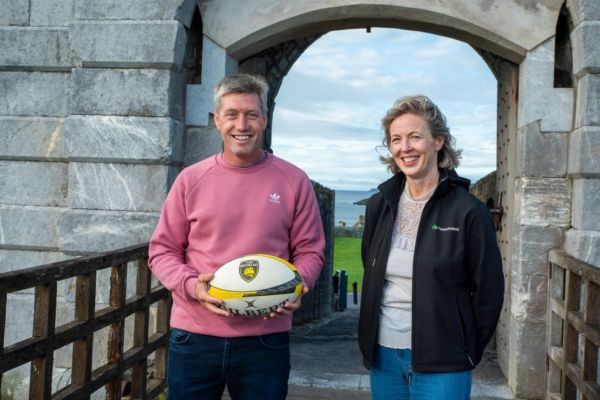Our Editor, Emily Hourican caught up with Andy Ferreira, managing partner at the award-winning Cask and co-owner of Paladar, to discuss reopening, changing trends, and what makes a great bar.
How has the last year been, post-reopening?
The year has been really exciting. Getting back into the swing of things and creating drinks and menus is like catching up with an old friend you haven’t seen in ages. My assistant manager, Carl d’Alton, rejoined us as manager after a sabbatical and came back bursting with energy and ideas, and it really invigorated the team, as he’s a passionate guy.
What kind of Christmas season do you expect to have this year?
Going on the bookings, it’s going to be nuts. I think businesses are really looking forward to having a proper old-school Christmas bash, after ‘Christmas Light’ last year. Cork is really buzzy at Christmas, where its size really, really creates a unique atmosphere – bustling pubs and the smells from the English Market. It’s heaven.
Congrats on your award. Can you tell us what it means to you?
It means so much to win this award, I think, amongst our industry. The Food & Wine Restaurant [of the Year] Awards are one of the most respected awards and are very sought after. We opened Cask in March 2017, and one thing I’m really passionate about is consistency. It’s one thing winning awards in Year One or Two, when you’re the new kid on the block and going through a honeymoon period, but to win an award like this in Year Five shows we’re doing something right, consistently. It really does come down to the team – it’s their award. A good cocktail bar creates a culture of creativity and consistency, and we’ve always strived to have that ambition, to be the best we can be.
Tell us about your background – where you grew up, studied, etc.
I grew up in East Cork, and it’s where I currently live. My parents are South African and immigrated in the seventies, just before I was born. They couldn’t handle apartheid and got out of Dodge. They did various things and travelled quite a bit around Europe – I was actually born in Portugal. In the mid-seventies, they opened a restaurant in Kinsale, with pretty much zero experience. My dad was the chef and my mum was front of house. Small, simple menus – apparently they introduced piri-piri curry to Cork! They did quite well out of it, but it was a challenge, as my brother and sister were young. They’re gifted cooks, and I put a lot of my love for hospitality down to them – they were always hosting, barbecuing, making biltong and home-made sausages. They also made home-made wine and cider. I travelled for all my twenties, living in lots of different countries, seeing as much of the world as I could before settling back in Cork.
What first drew you to the bar trade?
Being honest, I was brutal at school. I’d love to have gone to college and studied something like architecture, or even become a schoolteacher, but I just found it so hard to focus. I was far more interested in girls and sport. I think, for a lot of us who are slightly gregarious and enjoy the energy that bars and restaurants bring, the bar trade is breath of fresh air. You can be yourself. You’re accepted for who you are. We’ve always embraced big characters in Cask. I don’t want robots – I want personalities.
Read More: Cork Cocktail Bar Cask Wins Spirited Awards Accolade
When did you first realise that you wanted to do this professionally?
For me, professional bartending was a way to make money to travel. I spent a few years in Dublin, learning my trade, and when I was 21, I moved to San Francisco. I was there for three years, and then New York for a year. I travelled throughout Central America after that, and lived and bartended in Australia via trips all over Asia. I spent a year in India, and another year going from India to Greece, following the Spice Route through Pakistan, Afghanistan, Iran and Turkey. All this was paid for by bartending. Travelling has taught me many things I wouldn’t have learned at university.
What was your first big role?
Setting up Raise the Bar, a cocktail events and consultancy company I opened while working in Ireland’s best bar at the time, Long Island. I did cocktail menus and training for lots of bars. Taking that jump and setting up a company made it more real than just doing menus for bars.
What was that like?
It was a reality check. It gave me the confidence to realise I’d reached a certain level, and I just had to believe in myself. The tax side of things is daunting, though – VAT, income tax. Running a small business in Ireland is so challenging. My wife, Gráinne, and I did some pretty big events, all prepped in the kitchen in our little cottage, with our two dopey Labradors watching us – thank God the EHO never came knocking! We did several pop-up bars around Cork City, which were so much fun. Each one would have a different theme and concept, and we’d work with various distilleries and brands.
How did Cask come about?
I was hired to set up Cask through Raise the Bar. At first, they wanted a wine bar, then a gin bar – which was in a huge bubble at the time – but I persuaded them a cocktail bar was the way to go. I’d spent the last three years working on the Jameson Bartender Academy, which was run by Nick Strangeway and his team and Oisín Davis. Nick is one of the biggest names in the global drinks industry. He worked under Dick Bradsell for years – another global drinks icon. We’d invite representatives from different markets to Midleton, for a thorough immersion in Irish whiskey and hospitality.
I couldn’t believe I got the gig. They did the pilot and realised that if they needed something basic, like a bottle of bitters, they didn’t have a local contact. I got the job as bartender, driver and photographer. We were welcoming some of the best bartenders in the world to my backyard, and I was like a sponge. Day Three was in Ballymaloe, which is a five-minute drive from where I grew up. We’d do foraging tours of the walled garden – led by Mags, the head gardener – and then the bartenders would make drinks from these native ingredients, and we’d serve them at dinner time in Ballymaloe. It ran for five years, and this period was definitely the most exciting of my career.
Tell us about Cask – the ethos, drinks, service, etc.
Cask, first and foremost, is a modern, contemporary Irish bar. The service is super-chilled, the vibe is relaxed – €4 pints of Beamish and complimentary shots of Bucky were as important as the seasonal cocktail menu. We wanted to create a space that was different. Our design team absolutely killed it, and it’s a very pretty bar.
Our ethos is based around offering our guests the best Ireland has to offer, from ingredients to producers. We wanted to bridge the gap between how restaurants and bars operate. I admired and still admire the way chefs approach ingredients, in terms of flavour, texture, visually, originality – flipping elements on their heads.
Mother Nature determines the direction our drinks take in Cask. Seasonality is at the heart of everything we do, using ingredients at their peak ripeness. We created a rule that we would only use ingredients that grow in Ireland, outside of the base spirits and modifiers – no citrus and no tropical fruit, but that doesn’t stop us finding those flavours, as there’s such a plethora of native ingredients that provide a replacement flavour. It’s such an invigorating way to work. In summer, we use plants for their flowers and blossom. Then, months later, we return to the same plants and pick berries and fruits. DJs are also an essential part of Cask’s DNA. We have a roster of some wonderful DJs, who add so much to our weekends, when we are at our busiest.
What makes a great bar?
Atmosphere. This is the be-all and end-all, in my book. It’s that indescribable element. We do it incredibly well in Ireland.
What are the changing trends in hospitality – people’s expectations, new elements, etc.?
I think consumers are drinking less, and they are drinking better. Their knowledge has increased tenfold in the last decade. We all travel. We go to European cities and visit world-class bars, and I think expectation has increased, which is a good thing. Standards have been raised alongside consumer expectation.
What are the changing trends in cocktails – new influences, expectations, etc.?
Globally, no- and low-alcohol drinks are really a thing now. Guests are genuinely becoming more conscious of their alcohol intake. You’re definitely seeing more technology in cocktails now, with bars making their own distillates, rather than just infusions – more innovation.
What are the major challenges at the moment?
Paying the leccy and gas bills, like everyone else. It’s obviously been in the media a lot recently, and it’s been a serious jump in the last year. From an operational point of view, getting certain products is very challenging – agave spirits, in particular, but not just them – everything from bourbon to rum, and don’t get me started on wine. You plan a menu with certain products, print it, then, two weeks later, your supplier is telling you X and Y is 86. It’s infuriating, but you just get on with it. In the grand scheme of things, they’re pretty First World problems, though.
What are the main opportunities?
In my mind, quality always wins. It’s tough out there at the moment – there’s no denying it. The strong professional operators survive – the less on-the-ball operators won’t. Maybe it’s quality over quantity. That breeds opportunity.
Any other plans on the horizon for the next year or so?
My business partner, Richard, and I just opened our second venue, Paladar. It’s a Latin American-inspired cocktail bar and restaurant. It was probably a year in the planning, with a six-month renovation. It’s wonderful. Our focus is on rum, agave, cachaça, pisco. It’s a homage to one of the most vibrant and passionate parts of the world. It’s been a great first six weeks.
Name the top five non-alcoholic ingredients that you couldn’t do without.
That’s a tough one! Ingredients change, depending on the season. As we don’t use citrus – it doesn’t grow in Ireland – we have become pretty good at playing with acids. We use a blend of acids and maltodextrin to make an ingredient called Mockie Ah, which is Cork slang for fake. It’s very handy.
Seaweed, pineappleweed, wood sorrel, mint – the family, not the generic one you buy in kilograms – specifically, grapefruit and chocolate mint, and geranium.
Cask In A Nutshell:
How many seats? 150, including outside.
Number of staff members? 23
Signature cocktail? Shots of Bucky.
Cask, 48 MacCurtain Street, Cork: www.caskcork.com
Winner of the Best Cocktail Experience at the Food & Wine Restaurant of the Year Awards, in association with Rémy Martin, November 2022.
Paladar, 6 Bridge Street, Cork: www.paladar.ie
